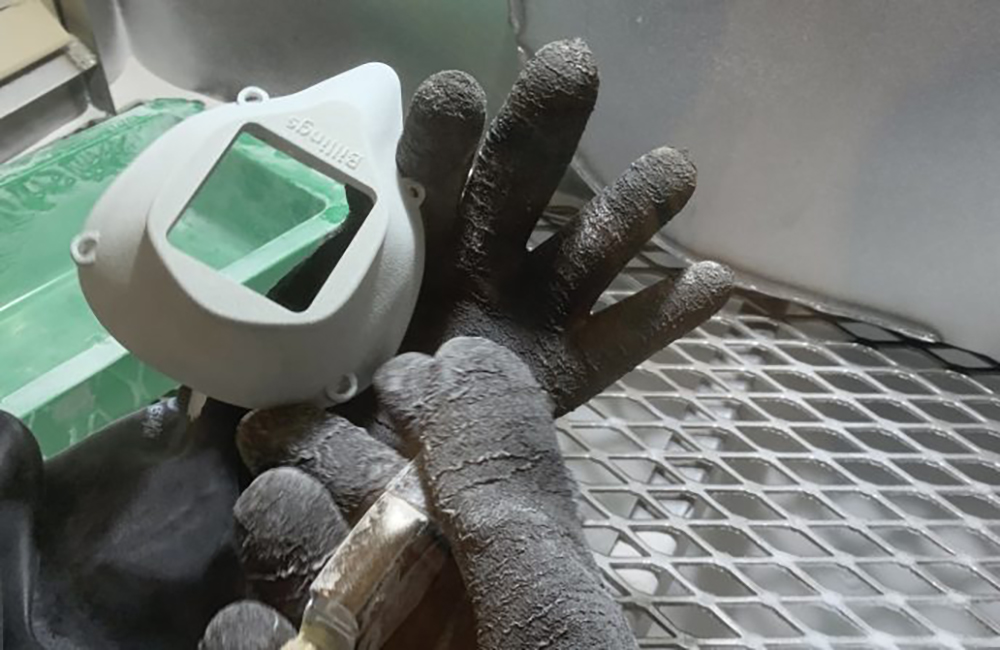VA Using 3D Printing to Aid COVID-19 Response
New manufacturing techniques are closing shortages in necessary medical and protective equipment.

As a component of the Department of Veterans Affairs’ “fourth mission” to assist America’s health care systems during times of national crisis, the agency has begun leveraging newly developed 3D-printing techniques to close widespread shortages in necessary medical and protective equipment.
The rapid spread of the COVID-19 pandemic throughout the U.S. has led to abrupt shortages in the supplies necessary to care for patients and protect medical staff overseeing emergency triage.
As an ongoing project within the VA’s modernization program, 3D printing as a means of advancing medical care has brought returns in areas ranging from surgical preparation to diagnostics. This has rested on the back of the VHA’s innovation ecosystem, which has invested considerable resources into novel uses of 3D printing to improve patient care with a particular attention to long-term outcomes. The VHA’s focus on using medical 3D printing to create orthotic devices for same-day delivery has proven the value of using new technology to manufacture medical devices at a speed that was previously unfeasible.
This investment in the rapid manufacturing potential of 3D medical printing has proven well-suited for supporting the agency’s vital supply lines, particularly in the production of masks, face shields and ventilators — all for which the U.S. has experienced shortages in health care systems overwhelmed by the COVID-19 pandemic.
While the initial pilot to test and codify novel applications of 3D printing to medical care was overseen at the VA Puget Sound Health Care System under the guidance of Beth Ripley, subsequent programs were seeded across 33 VA sites in the wake of the Puget Sound initiative’s demonstrable success.
Rather than being improvised or managed ad hoc across VHA facilities, this reallocation of 3D-printing resources to meet the demands of the COVID-19 pandemic is occurring as a deliberate policy across the agency as well as in coordination with other partners in the federal government.
“The collective actions of our partners allow us to bring VA’s medical expertise in 3D printing to the frontline of the fight against COVID-19, helping health care providers and patients stay safe,” VA Secretary Robert Wilkie said following the announcement of the VA’s mobilization to fulfill its Fourth Mission.
In addition to meeting needs particular to the VHA health system, VA is also partnering with other leaders in public sector 3D printing innovation — namely the FDA and NIH — to pioneer more sophisticated and broadly deployable methods to meet America’s broader COVID-19 response. This has included coordination with the private sector to provide manufacturing and supply chain support to bring to fruition the design work occurring across technically innovative wings of the federal government.
Going forward, the VA appears to be taking a particular discretionary role in evaluating the design and efficacy of new equipment that will be manufactured and deployed to emergency wards caring for the most critical COVID-19 patients.
“With the collective actions of our partners, we’re bringing our medical expertise and 3D-printing experience to the front line of the fight against COVID-19,” Ripley said upon the announcement of the VA’S forefront role. “We’re helping health care providers and patients stay safe.”
This is a carousel with manually rotating slides. Use Next and Previous buttons to navigate or jump to a slide with the slide dots
-

NSF Eyes Industry Partnerships to Drive Quantum Innovation Amid NQI Reauthorization Push
NSF is advancing U.S. leadership in quantum through public-private partnerships as lawmakers push to reauthorize the NQI.
3m read -

White House Science Chief: US-Driven AI Sets Global Standards
Michael Kratsios outlined how American AI technology on the global stage will help standardize the tech and counter China’s influence.
5m read -

Modernizing Critical Infrastructure in the Face of Global Threats
Officials are expanding the latest strategies in boosting defense infrastructure, including securing satellite communications, upgrading enterprise-wide technology, optimizing data management.
20m watch -

Trump AI Orders Call for Speed in Building Infrastructure
The directives call for expanding AI infrastructure, streamlining federal permitting and promoting AI exports.
4m read -

DOD Accelerates Software Modernization with Agile DevSecOps Push
The Pentagon's software implementation plan tackles cultural hurdles and integrates security early to deliver critical capabilities faster.
6m read -

White House Unveils AI Action Plan to Secure Global Dominance
The strategy outlines steps to accelerate private sector innovation, build critical infrastructure and advance U.S. leadership in AI policy and security.
3m read -

VA's Platform One Powers Rapid Innovation to Bolster Digital Services
VA's Platform One accelerates software development timelines from weeks to hours, ultimately enhancing digital services for veterans.
5m read -

Federal Leaders Receive Federal IT Efficiency Flywheel Awards from GovCIO Media & Research
Five federal IT leaders received Flywheel Awards for driving innovation and modernizing technology at the Federal IT Efficiency Summit.
5m read -

Doing More with Less is Muscle Memory for IRS, Former Deputy CIO Says
Darnita Trower discusses her experience, the legacy she’s left behind and how she pushed the IRS to modernize itself,
20m watch -

Opinion: Original Intelligence Is the Missing Piece for AI Transformation
Limitations of AI agents and development drive growing needs for workforce development and "original intelligence."
3m read -

VA CIO Targets Modern IT and Smarter Workforce Alignment
Agency leaders told lawmakers they are focused on trimming legacy systems and restructuring its workforce to streamline operations.
3m read -

Pentagon's $200M AI Contracts Signal Broader Effort to Transform Talent
The Army is leveraging Silicon Valley, reservist programs and new hiring strategies to integrate critical digital skills in its ranks.
5m read




